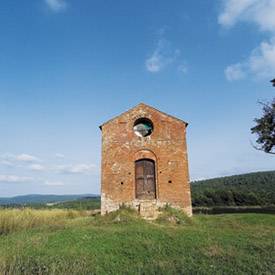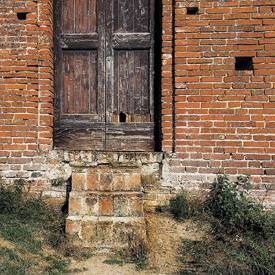Focus and Camera Stability
|
|
| Autofocus is important for determining which part of the scene is in focus and which parts are blurry. When you have a basic understanding of how your camera's autofocus system works, you need to develop good habits for keeping the entire camera steady while shooting. Otherwise, the entire scene will be blurry and nothing will be in focus; not even the wall in the background. In short, autofocus does nothing to compensate for camera shake. Although most of us do our best to keep things steady while shooting, there are pitfalls to be aware of. The first is when you're shooting in low light. In dimly lit situations, you must open up your camera's aperture to let in more light. You must also slow down the camera's shutter speed so that more light can pass through the lens. If you're shooting in automatic mode, the shutter speed is automatically lowered, making the long exposure far more sensitive to any movement. In addition, the slightest finger movement while pressing the shutter is more than enough to blur the image. Although some manufacturers have developed cameras and lenses that nullify a small degree of camera shake, it's still a good idea to use a tripod for any shots below 1/30 of a second (see Chapter 2, "Digital Exposure," for more on the relationship between shutter speed and f-stops). If your subject is moving along a predictable path, you can pan the camera to follow the movement. Doing so blurs the background even more, while keeping the moving subject in sharper focus. For example, if you're shooting a horse race or stock car race, pan the camera to follow the subject, and the results will be sharper.
TimingThere's more to focus than simply mastering the autofocus feature and holding the camera steady. These technical skills will make certain image areas sharp, but a better question to consider is what to shoot at, or perhaps when to shoot. These questions revolve around the photographer's goal of capturing the decisive moment.
The best way to capture the moment is to have an innate sense of intuition and timing. Unfortunately, these skills are largely instinctive and are developed more through experience than instruction. Having said that, using your camera's burst exposure setting is extremely helpful in capturing a number of shots in a brief time span, increasing your chances of nailing the decisive shot. Whether you're shooting in single or burst (multi-frame) mode, it's important to get used to the shutter lag that happens between the time you push the shutter release and the moment the image is captured. When you press the shutter release, the camera determines exposure, sets white balance, and focuses on the subject. On some cameras, this set-up time creates a noticeable delay before the picture is taken. Sometimes you must adjust your timing to get the shot right. In certain cameras, it's possible to switch from active to passive focus mode, eliminating the pre-focusing beam that can create the shutter lag. Each camera is different though, so check your owner's manual and practice to understand the specifics of your system. |
|
|
EAN: 2147483647
Pages: 141
- Chapter I e-Search: A Conceptual Framework of Online Consumer Behavior
- Chapter VII Objective and Perceived Complexity and Their Impacts on Internet Communication
- Chapter IX Extrinsic Plus Intrinsic Human Factors Influencing the Web Usage
- Chapter X Converting Browsers to Buyers: Key Considerations in Designing Business-to-Consumer Web Sites
- Chapter XIII Shopping Agent Web Sites: A Comparative Shopping Environment



